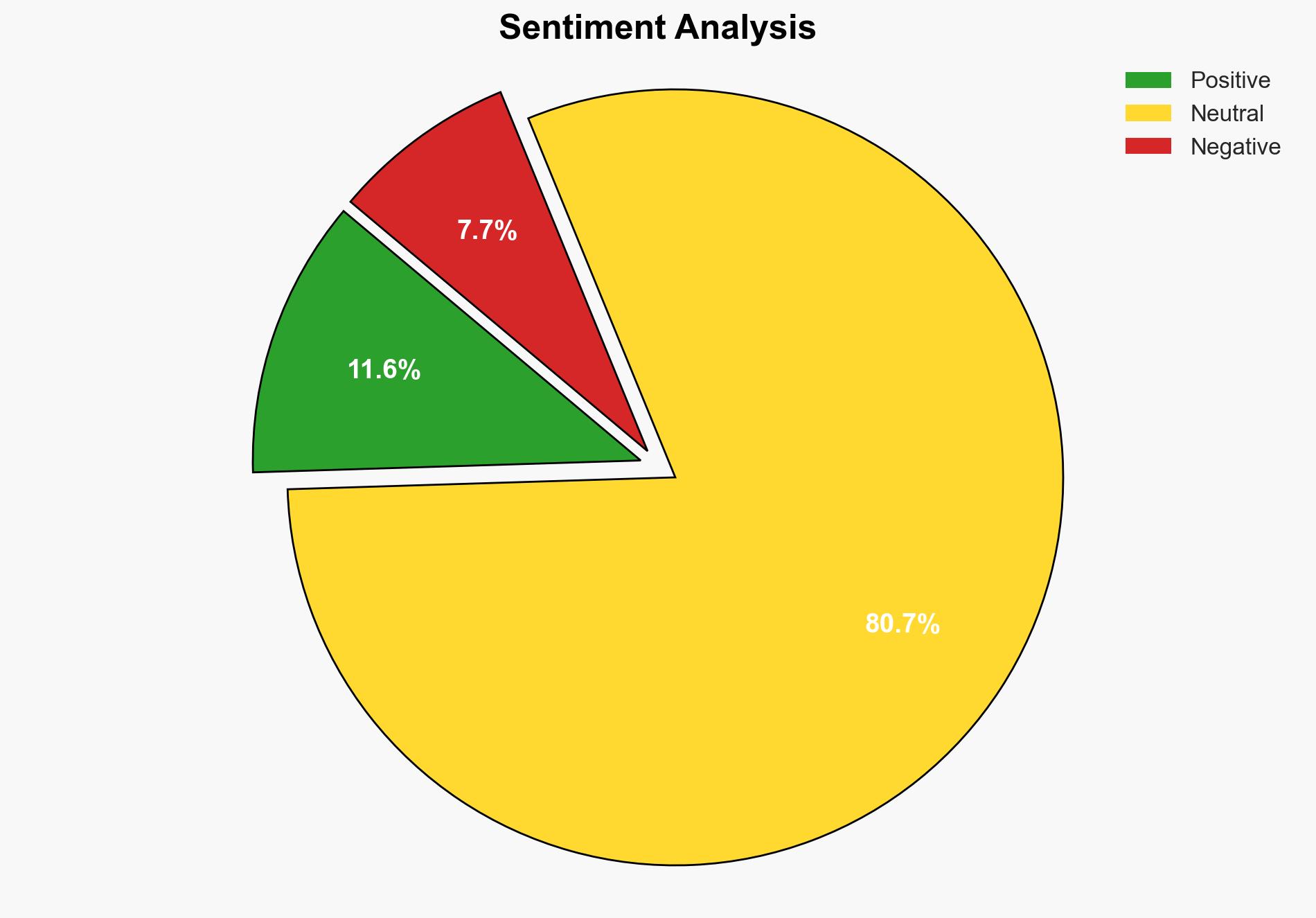Python Bot Delivered Through DLL Side-Loading Tue Mar 18th – Sans.edu
Published on: 2025-03-18
Intelligence Report: Python Bot Delivered Through DLL Side-Loading Tue Mar 18th – Sans.edu
1. BLUF (Bottom Line Up Front)
A Python-based bot has been delivered through a sophisticated DLL side-loading technique, exploiting a known vulnerability in software applications. This method involves placing a malicious DLL in the location of a legitimate DLL, causing the application to load the malicious version. The attack was delivered via a ZIP archive, masquerading as a legitimate application, and included a decoy PDF file to avoid detection. The bot is designed to bypass traditional security controls and establish persistence on the victim’s system.
2. Detailed Analysis
The following structured analytic techniques have been applied for this analysis:
General Analysis
The attack leverages DLL side-loading, a classic vulnerability, to execute malicious code. The ZIP archive contained files disguised with legitimate icons to deceive users. Upon execution, the malware sets up a Python environment and fetches the bot from a remote server. The bot’s code loader renames processes to evade detection and implements persistence mechanisms to ensure continued operation. This attack highlights the evolving tactics of threat actors in bypassing security measures.
3. Implications and Strategic Risks
The use of DLL side-loading presents significant risks to national security and economic interests by allowing unauthorized access to sensitive systems. This technique can be used to deploy a wide range of malware, potentially leading to data breaches, intellectual property theft, and disruption of critical infrastructure. The attack’s sophistication suggests a trend towards more advanced and targeted cyber threats, posing challenges for cybersecurity defenses.
4. Recommendations and Outlook
Recommendations:
- Enhance monitoring and detection capabilities to identify and mitigate DLL side-loading attempts.
- Implement stricter controls on software installation and execution to prevent unauthorized DLL loading.
- Conduct regular security audits and vulnerability assessments to identify and address potential weaknesses.
Outlook:
In the best-case scenario, increased awareness and improved security measures will reduce the effectiveness of DLL side-loading attacks. In the worst-case scenario, threat actors will continue to refine their techniques, leading to more frequent and severe breaches. The most likely outcome is a continued cat-and-mouse game between attackers and defenders, with incremental improvements in security practices.
5. Key Individuals and Entities
The report mentions Xavier Merten and Xameco as individuals involved in the analysis and commentary on the attack. Their insights contribute to understanding the technical aspects and implications of the threat.





